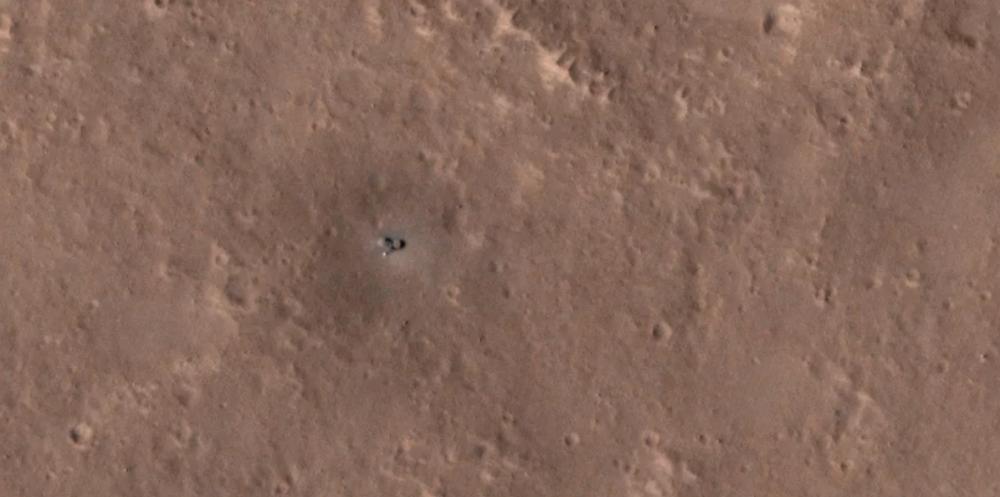IT House April 19 news, On April 9 NASA's Mars Reconnaissance Orbiter captured a high-definition image of the InSight Mars rover covered in Martian dust, which landed on Mars in November 2018.

The Mars Reconnaissance Orbiter's High Resolution Imaging Experiment (HiRISE), which is often responsible for taking detailed photographs of the probe on the surface of Mars, briefly entered safe mode in January as so much dust covered its solar panels that InSight had little solar energy available, though subsequent power production has resumed.
The University of Arizona, which manages HiRISE, said April 15: "Long-term change detection at sites like the InSight landing zone can tell us how dust moves around Mars and help us understand how the Surface of Mars evolves over time." ”
In a February update, the agency said it expects electricity to last only until around mid-year. "The solar panels of NASA's InSight lander are generating almost as much electricity as they did before the [January] storm. This power level should allow the lander to continue scientific operation until the summer," the update said.
Images taken by the Mars Reconnaissance Orbiter show what happened shortly after InSight landed and in March 2022
InSight, which landed on the Red Planet in 2018, has been working for some time at reduced power due to dust buildup on its dual solar panels. Engineers managed to remove some dust from individual panels in 2021 by drenching sand on them.
Last year, NASA warned that the reduction in power supply could sometimes end InSight's operations in 2022. Compounding this problem is the natural orbital period of Mars, which in 2021 reaches its maximum distance from the Sun, reduces available solar energy, and the seasonal cycle of dust activity is picking up.
IT House understands that the InSight rover is designed to live for one Martian year (687 Earth days), and its focus is on understanding the interior of Mars, particularly by observing the concussions of the Red Planet, known as the Martian earthquake.